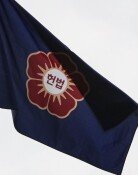USFK concerns over degradation of THAAD for being left by the wayside
USFK concerns over degradation of THAAD for being left by the wayside
Posted June. 07, 2017 07:14,
Updated June. 07, 2017 07:24
As the Defense Ministry decides to conduct a full-blown environmental impact assessment on the site of the Terminal High-Altitude Area Defense (THAAD) in Seongju, North Gyeongsang Province, the US Forces Korea (USFK) concerned over the management of four launchers that had been brought into the country in addition.
Comparing to the small-scale environmental assessment that is being conducted now, the "strategic or general environmental study" has more assessment categories and difficult procedures. Hence, it is highly likely that it would take at least six more months to complete the test and delay the construction of the site, resulting in postponing the deployment of THAAD by the first half of 2018. In such case, the additional four launchers that is now kept in Camp Carroll near Seongju will be a headache for being left by the wayside and not to be initiated.
The USFK concerned over degradation and malfunctions of THAAD for being stored for a long time. A USFK source said, “There are many cases that cars are not be able to operate normally if they are left for months and not even turn on the engine. THAAD missile defense equipment entered into Korea should be operated as soon as possible to maintain its optimal performance.”
That is why the THAAD equipment was operated on the next day of deployment. Two THAAD launchers, fire control radar, and engagement control station (ECS) were first delivered to Osan Base in Pyeongtaek, Gyeonggi Province, in this March and later deployed in temporal pad in the field of Seongju base on April 26. Another source said that the USFK is thoroughly studying the impact of delayed deployment on its actual performance and operation if the equipment fails to be installed within this year due to the intensified probe. Criticism may arise if THAAD launcher is actually being left for a long time for widening military capabilities gap as the country makes its key defense capability against nuclear missile threats from the North useless.
Some observe that the deployment of THAAD will be accelerated depending on the result of the Korea-U.S. Summit that is scheduled to be held at the end of this month if North Korea’s nuclear missile threat crosses the red line. It is possible that the two leaders agree not to accept provocations of the North anymore and decide to advance the date of THAAD deployment by adjusting the level of environmental assessment if North Korea conducts another ICBM missile test aiming at the U.S. mainland.
hjson@donga.comysh1005@donga.com
Headline News
- Med professors announce intention to leave hospitals starting Thursday
- Bridge honoring Sgt. Moon Jae-sik unveiled in Pennsylvania
- Chief of Staff Chung tells presidential secretaries to stay away from politics
- US FTC bans noncompete agreements
- N. Korea launches cyberattacks on S. Korea's defense companies







